|
Introduction
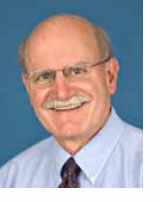 Hello again from Children’s Hospital Boston. We continue
to grow, specialize, teach, perform research and provide
outstanding patient care with a constant emphasis on improvement
and effectiveness. Our success is a product of teamwork
which comes from the creation of an environment of respect
and support which is at times missing in the academic and
practice environment. It is this spirit of cooperation that has
allowed us to continue to grow and prosper in a competitive
environment.
Hello again from Children’s Hospital Boston. We continue
to grow, specialize, teach, perform research and provide
outstanding patient care with a constant emphasis on improvement
and effectiveness. Our success is a product of teamwork
which comes from the creation of an environment of respect
and support which is at times missing in the academic and
practice environment. It is this spirit of cooperation that has
allowed us to continue to grow and prosper in a competitive
environment.
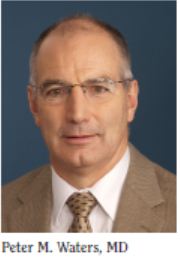
Peter Waters has taken over as
the clinical chief of the Department
of Orthopaedic Surgery here at
Children’s, performing a role that is
integral to our continued success. In
this role, he has responsibility for
ambulatory and surgical volume, as
well as distribution of resources and
planning in order to achieve our volume
targets. He has developed an OR
time bank in which OR time is redistributed
in an organized fashion, allowing us to achieve higher
levels of block time utilization, facilitating continued acquisition
of this precious resource for our department. Achieving
higher productivity levels is critical in this time of greater
need for efficient use of resources.
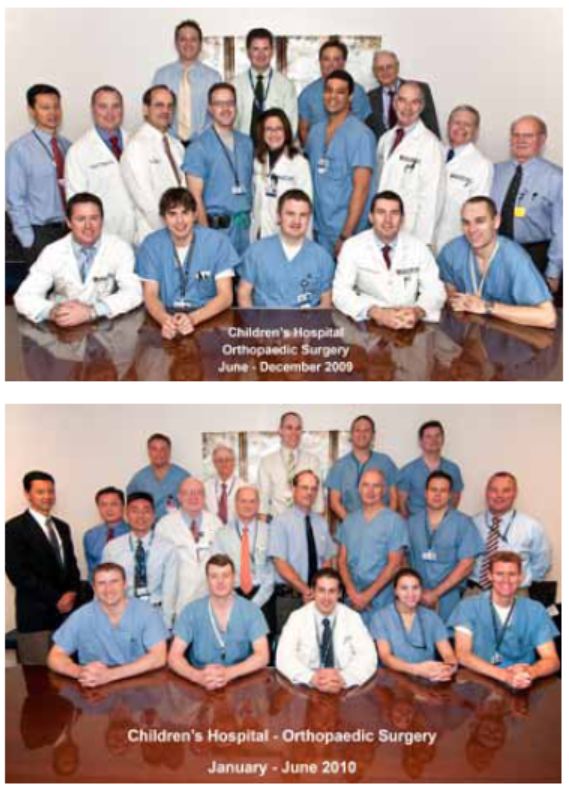 While we strive for greater efficiency, we also are pursuing
a higher level of quality. Our goal is to measure outcomes
of 80% of our surgical procedures on a routine basis over the
next 5 years. Our Clinical Effectiveness Research Unit which
was put into place about 6 years ago will be central to this
effort. Peter Waters is leading this effort, along with Susan
Mahan, Travis Matheney, Tim Hresko and many other members
of the department. Quality improvement and improved
efficiency are the major efforts in our department at this time.
While we strive for greater efficiency, we also are pursuing
a higher level of quality. Our goal is to measure outcomes
of 80% of our surgical procedures on a routine basis over the
next 5 years. Our Clinical Effectiveness Research Unit which
was put into place about 6 years ago will be central to this
effort. Peter Waters is leading this effort, along with Susan
Mahan, Travis Matheney, Tim Hresko and many other members
of the department. Quality improvement and improved
efficiency are the major efforts in our department at this time.
Clinical care in our department has been markedly
improved by the addition of an ever-expanding group of midlevel
providers, “MLP’s.” This group of individuals, now numbering
15, is comprised of nurse practitioners and physician
assistants. They perform all the work-ups in the ambulatory
area, assist at surgery at the main hospital and at the satellites,
see emergency room consults for routine emergency room
visits, and provide inpatient care on a daily basis. They also
see post-op visits at times, again improving our efficiency of
care. An NP or PA makes rounds with the residents between
6:15AM and 6:30AM, obtaining the sign-out list for the day
with identification of inpatient problems and discharge criteria
on all patients. During the day, care and consultations
are coordinated by the NP or PA, ensuring that discharges are
done as soon as possible.
With the recognition that Emergency Room ad-ons will
continue to increase and overwhelm the orthopaedic staff, we
embarked upon the Orthopaedic Surgeon of the Week Program
(OOW). The OOW is an orthopaedic department member who
gives up all elective practice a week at a time and takes emergency
call from 7AM to 7PM daily. During this time, they do
consultations, emergency surgery, and back-up the NP’s and
PA’s on emergency or trauma call, as well as seeing all urgent
patients and providing surgical care. This has resulted in an
effective way to see consultations and emergency patients
with the mandate of attending physician care and supervision.
This change is an effort to improve care, recognizing that with
limited resident work hours, the resident experience is markedly
improved by this attending supervision and teaching, as
well as the assistance of the MLP’s. Night call is still done by
a resident with rotating orthopaedic staff.
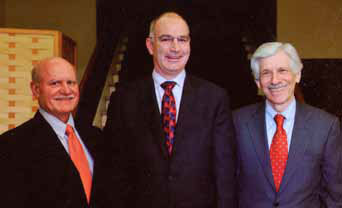 It is significant that this year’s
U.S. News & World Report again
recognized pediatric orthopaedics at
Children’s Hospital Boston as being
Number 1 in the country. The score
of the top three hospitals in orthopaedics
is essentially identical but we will
take this as an outside validation of
our efforts at clinical excellence.
It is significant that this year’s
U.S. News & World Report again
recognized pediatric orthopaedics at
Children’s Hospital Boston as being
Number 1 in the country. The score
of the top three hospitals in orthopaedics
is essentially identical but we will
take this as an outside validation of
our efforts at clinical excellence.
We have made a commitment
to growth in satellite locations primarily in the form of megasatellites.
In this respect, the Waltham satellite functions as a
small hospital with a 12-bed inpatient unit, 6 operating rooms,
and a large ambulatory orthopaedic area. Our space there is
about 8,000 square feet with 7 pods, each containing 3 exam
rooms, a cast room, physical therapy unit, and brace shop.
With a comprehensive orthopaedic department such as this,
we are able to carry out many of the ambulatory evaluations as
well as much of the routine orthopaedic care in Waltham, just
as we would in the Longwood Avenue environment. Satellites
on the North Shore and South Shore on a somewhat smaller
scale will be opening this January.
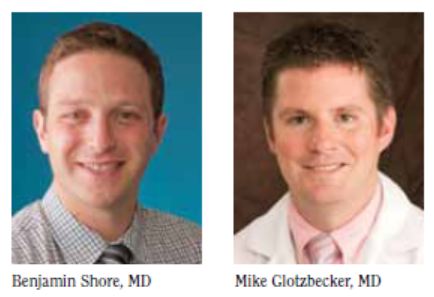 The satellite strategy has allowed us to satisfy the demands
of a market which requires routine orthopaedic care closer to
home, as well as providing a lower cost environment in which
to provide that care. Anesthesia, nursing and medical care is
the same in the satellite environment as it is on the Longwood
campus. As we achieve greater efficiency, decreased turnover
time and more rapid surgical time, we intend to pass such
savings on to the insurers and hopefully to the pubic who is
paying the bill for medical care.
The satellite strategy has allowed us to satisfy the demands
of a market which requires routine orthopaedic care closer to
home, as well as providing a lower cost environment in which
to provide that care. Anesthesia, nursing and medical care is
the same in the satellite environment as it is on the Longwood
campus. As we achieve greater efficiency, decreased turnover
time and more rapid surgical time, we intend to pass such
savings on to the insurers and hopefully to the pubic who is
paying the bill for medical care.
RESIDENT AND FELLOW EDUCATION
We continue to educate residents from the Harvard
Combined Orthopaedic Residency Program with a 6-month
rotation in the third year. We have 6 Harvard residents, a
resident from Dartmouth and one from Lenox Hill. Photos
are included of the latest classes of residents in our program.
Our most recent fellows were Darin Davidson, Benjamin
Shore, and Mike Glotzbecker, a previous HCORP resident who spent an additional year with us. Darin is pursuing a
tumor fellowship in Toronto, prior to embarking on a career
combining pediatric orthopaedics and orthopaedic oncology.
Mike Glotzbecker has completed his fellowship and will join
the staff here at Children’s, with a primary interest in spine
surgery, in addition to general pediatric orthopaedics. The
third fellow, Ben Shore will join our staff as well. He has an
interest in neuromuscular disease as well as epidemiology and
outcomes research. He is presently attending the Harvard
School of Public Health part-time, as well as beginning an
orthopaedic staff job with us.
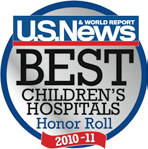
The teaching program at the present time is under the
direction of Young-jo Kim and Peter Waters. We continue
to re-evaluate the program and make efforts to improve the
education of our residents and fellows. The clinical material
of over 85,000 ambulatory visits and over 5,000 surgical cases
provides an outstanding basis for education but requires constant
attention to coordination and detail, as you might guess.
We continue to have ACGME approval for both the residents’
and fellows’ program and at the present time, we and they
believe that the educational program is on the right track and
improving. The conference remains a daily educational experience
but has evolved to include a journal club and an indications
conference, as well as the traditional pediatric teaching
conference, Chief’s Conference, Fellows’ Conference and a
Mortality and Morbidity Conference. The greatest challenges
to the educational environment at this time, I think, are the
need for greater efficiency and volume in the hospital and satellite
settings and the 80-hour work week imposed by ACGME,
superimposed on an environment of changing patient, parent,
and physician attitudes.
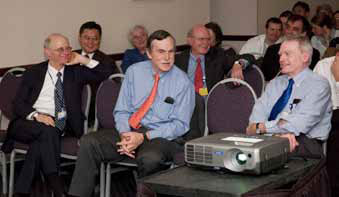
ACADEMICS
Over the past year, we have seen several promotions within
the department, including Dr Michael Millis’ promotion to
Professor of Orthopaedic Surgery at Harvard Medical School,
as well as Young-Jo Kim’s promotion to Associate Professor at
Harvard Medical School. There have been several changes in
the HMS endowed chairs with Dr Peter Waters assuming the
John E. Hall chair at Harvard Medical School; Phyllis Brewer
was the major donor to this chair, with many orthopaedic
surgical staff and fellows who had worked with Dr Hall also
providing major gifts. It seemed appropriate to me that the
John E. Hall chair remains with the clinical chairman of the
department.
I assumed the Ormandy chair in Orthopaedic Surgery and
Dr Matt Warman moved to the Harriet Peabody Professorship
in Orthopaedic Surgery, replacing Melvin Glimcher. Matt is
the director of our orthopaedic research laboratory and has
been in this position now for 3 years.
In the basic science research lab, Dr Matt Warman continues
as the director of the lab, with an emphasis on genetics
and orthopaedic surgery. We have added a new person to the
lab this year, Matthew Harris, PhD, an assistant professor,
recruited by a combined search with Genetics from the Max
Planck Institute in Germany. His expertise is skeletal development
in zebra fish; we look forward to great things from him.
The publication and promotion record within the department
continues on track. My request is that all staff members
publish at least 3 papers per year and continue to expand their
roles on a local, national, and international level with respect
to teaching. With these goals in mind, all staff have received
promotions on target and the academic level of the department
continues to rise at an appropriate level.
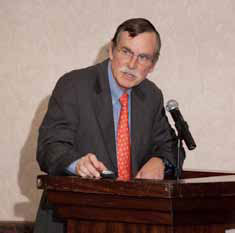
Dr Charles Johnson from Texas Scottish Rite Hospital was
the Visiting Professor for our annual Grice Day lecture. He
spoke on spinal growth as well as spinal fusion and presented
a very interesting discussion about congenital deformities in
the lower extremities. Case presentations were done by the
residents and fellows that resulted in lively discussion and,
as always, we welcome new and different ideas from outside
of Children’s Hospital. As always Charlie was an outstanding
visiting professor and brought with him a sense of humor,
excellent ideas and concepts which will improve orthopaedic
care at our hospital, as well as the knowledge base of our staff.
With respect to individual accomplishments, Dr Waters is
the first vice-president of the Pediatric Orthopaedic Society of
North America and will take over as president next year.
I have continued my work with the American Board of
Orthopaedic Surgery, for which I am in charge of the oral
examination. I hope any of you taking the oral exam, either for
Part II certification or recertification found this to be a valuable
experience, as we put a great deal of effort into making it
be both fair and comprehensive. I will take over as president
of the ABOS next year. To mention each individual member
of the staff in the department would take more space than
that allotted to us. They have been listed with academic rank
and role within the department. As our orthopaedic staff has
grown to 26 orthopaedic surgeons, 8 residents and 9 fellows
(including subspecialty fellows in Sports, Tumor, Hand and
Hip), we continue to grow, develop subspecialties and provide
excellent clinical care as well as a continued research effort.
Update on Dr John E. Hall: John and Frankie have moved
back to Toronto where they are living in an apartment near
their family. John’s interest in reading orthopaedic material
and in the development of our department continues.
|

